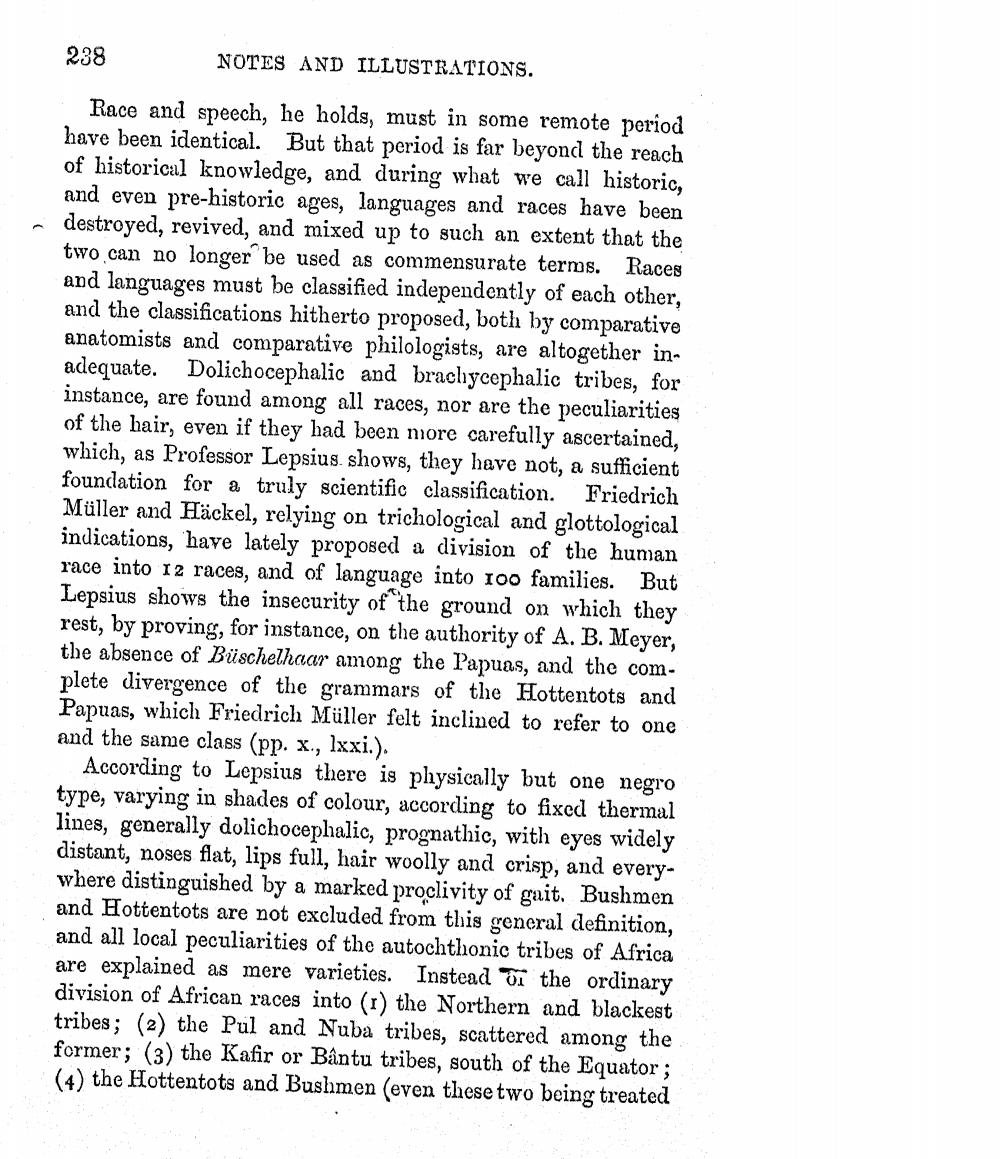________________
238
NOTES AND ILLUSTRATIONS.
Race and speech, he holds, must in some remote period have been identical. But that period is far beyond the reach of historical knowledge, and during what we call historic, and even pre-historic ages, languages and races have been destroyed, revived, and mixed up to such an extent that the two can no longer be used as commensurate terms. Races and languages must be classified independently of each other, and the classifications hitherto proposed, both by comparative anatomists and comparative philologists, are altogether inadequate. Dolichocephalic and brachycephalic tribes, for instance, are found among all races, nor are the peculiarities of the hair, even if they had been more carefully ascertained, which, as Professor Lepsius shows, they have not, a sufficient foundation for a truly scientific classification. Friedrich Müller and Häckel, relying on trichological and glottological indications, have lately proposed a division of the human race into 12 races, and of language into roo families. But Lepsius shows the insecurity of the ground on which they rest, by proving, for instance, on the authority of A. B. Meyer, the absence of Büschelhaar among the Papuas, and the complete divergence of the grammars of the Hottentots and Papuas, which Friedrich Müller felt inclined to refer to one and the same class (pp. x., Ixxi.).
According to Lepsius there is physically but one negro type, varying in shades of colour, according to fixed thermal lines, generally dolichocephalic, prognathic, with eyes widely distant, noses flat, lips full, hair woolly and crisp, and everywhere distinguished by a marked proclivity of gait. Bushmen and Hottentots are not excluded from this general definition, and all local peculiarities of the autochthonic tribes of Africa are explained as mere varieties. Instead on the ordinary division of African races into (1) the Northern and blackest tribes; (2) the Pul and Nuba tribes, scattered among the former; (3) the Kafir or Bantu tribes, south of the Equator; (4) the Hottentots and Bushmen (even these two being treated




